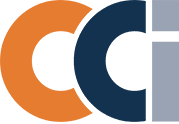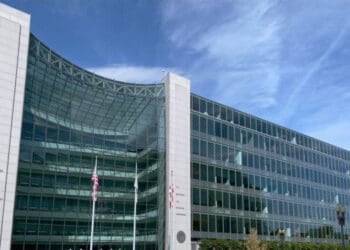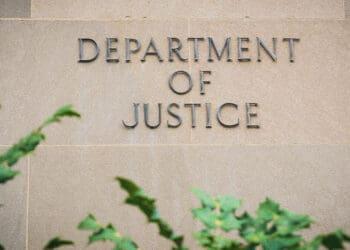The ripple effects of tariff policies extend far beyond simple cost increases, creating complex compliance challenges that span legal, financial and operational domains. CCI contributing writer Cathy Siegner explores how companies of all sizes are responding to this unpredictability, while experts warn that with the DOJ signaling increased customs enforcement under the False Claims Act, the stakes for compliance teams continue to climb.
Regardless of whether President Donald Trump follows through this week with currently paused tariffs on an estimated $918 billion worth of goods imported from Canada and Mexico, the threat has business risk experts advising affected companies to reduce their exposure as soon as possible.
Corporations are facing tough choices about changing sources, absorbing costs, raising prices, relocating operations and generally finding ways to cope with the cascading effects of tariffs. And the effects are broad across organizations, including teams like legal and general counsel (GC).
Laura Cohn, research director in Gartner’s legal and compliance practice, said GCs are being advised to take a three-step approach and work closely through the process with chief supply chain officers and chief financial officers.
“What we essentially try to start with is the impact, number one; evaluate potential actions, number two; and number three, keep senior leads and the board in the decision-making process. That’s it from a high level,” she said. “For GC, there are two key partners for them on this, the chief supply chain officer and the CFO. As you go through the three steps, the supply chain officer can assess what’s possible, and the CFO can assess the cost.”
As part of Gartner’s research, Cohn said a scrape of earnings calls revealed that leaders are talking about absorbing tariff costs, transferring them to suppliers and changing sourcing to countries not facing the tariffs.
“The other thing people talk about is moving more production to the US, which would avoid the tariffs,” she said.
Beyond these strategic approaches, companies are working out how to balance heightened compliance obligations and risk management challenges as they adapt their supply chains to minimize tariff exposure.
Coping with increased costs
Major industrial sectors importing products from Mexico and Canada include car parts and foods and beverages. General Motors, Ford and Toyota have manufacturing facilities south of the border, while GM, Ford and Stellantis (which owns Chrysler) operate factories north of it. On the food-and-beverage side, Constellation Brands, PepsiCo and Coca-Cola produce and import products from Mexico, and Kraft Heinz and Keurig Dr Pepper do so from Canada.
Tariffs on these and other foreign-sourced products are expected to increase consumer prices in the US, although larger companies may be able to absorb the costs. Mid-sized or smaller companies could have a tougher time, however, and some are already facing major operational challenges.
According to the National Association of Manufacturers (NAM), many US manufacturers are already working on thin margins, and tariffs will only add to the problem. Recently cited examples include two large manufacturers whose import costs from Mexico were expected to rise by millions of dollars, while NAM said a third company importing copper from Canada expected its per-truckload cost to increase by about $50,000.
“To mitigate the adverse effects of today’s tariffs, manufacturers call on President Trump and Congress to implement a comprehensive manufacturing strategy that would create predictability and certainty to invest, plan and hire in America,” said NAM President and CEO Jay Timmons in a March 4 statement.
Finding alternative sources of supply may be possible for certain companies, and in some cases, those with broad exposure to tariffs have lowered their capital expenditure plans. A Goldman Sachs analyst recently reported that companies in the S&P 1500 had trimmed capex plans down to 2% from 5% for those not similarly exposed.
Identifying alternative suppliers adds to business expenses since companies have to find and vet them through a process of thorough due diligence, said Nicole Sherwin, chief impact officer at EcoVadis, a business sustainability assessment platform.
“Qualifying a new supplier involves evaluating their financial stability, operational capabilities and ability to meet delivery deadlines,” she said. “Companies must also assess the supplier’s track record on business practices, sustainability and adherence to local regulations, often through site visits, audits and certification reviews. Additionally, contractual terms and favorable agreements need to be negotiated to ensure alignment with business objectives.”
Sherwin added that the risks involved “are at an all-time high,” making this less than an ideal time for importing companies to shift suppliers.
“The need to manage and mitigate supply chain disruptions, particularly in such an uncertain economic climate, makes the decision to onboard a new supplier far more complex and critical than ever before,” she said.
Benefits of scale and US sourcing
For larger companies facing new tariffs, the challenges may be easier to confront because of economies of scale and wide distribution networks.
Leaders at Walmart, the world’s largest retailer by revenue, recently said they were confident about navigating tariffs because ongoing planning had better positioned the Arkansas-based company. Still, concerns over sourcing lower-priced goods from China and pullbacks on consumer spending dampened Walmart’s outlook for 2025.
Sourcing practices can help buffer the situation since Walmart originates two-thirds of its merchandise from the US, and groceries are included in a large proportion of that. Of the company’s US business, groceries comprise about 60%.
Contrast that with Amazon, where a Morgan Stanley analyst estimated two-thirds of its first-party merchandise cost of goods sold is non-grocery and which has 40% exposure to China. Apple has reportedly been reducing its manufacturing footprint in China and shifting some iPhone assembly operations to India and AirPod and other accessories to Vietnam.
Some smaller manufacturers are also limiting their tariff exposure by sourcing raw materials within the US and keeping finished goods sales there. One of those is Pennsylvania-based Utz Brands, which sells salty snacks under the brands Boulder Canyon, Utz, Zapp’s and On the Border.
Ajay Kataria, executive vice president and chief financial officer of Utz, said at a recent business conference that the company does limited across-the-border business and therefore has limited direct exposure to tariffs, although there could be some impact through its suppliers.
“There might be indirect impact if our suppliers are impacted for whatever reason, and they’re passing along costs. We just don’t have a way to quantify that right now,” he said at the recent Bank of America Consumer and Retail Conference.
Moving production facilities from one country to another can be a lot more expensive and time-consuming than switching up suppliers. Yet some US-based companies have embarked on such a strategy to limit exposure to disruptive conditions.
Bernie Thompson, founder and chief technology officer of Washington-based Plugable Technologies, said his company has transitioned from importing more than 95% of its docking station and USB accessories and cables from China in 2018 to less than 12% in 2024.
Despite having transformed the company’s supply chain, he said the newly imposed 20% tariffs on goods imported from China are too large to absorb within Plugable’s margins, and that his company has had to raise prices to maintain viability.
“We’ve already executed the majority of our China exit over the past three years due to geopolitical and competitive concerns,” Thompson said. “In Q1 2025, we completed several previously planned transitions. However, over the past two months, we’ve paused new sourcing moves pending clarity on the evolving tariff landscape. The unpredictability around which countries may be targeted has increased our caution. At this point, we’re minimizing risk exposure and avoiding large capital commitments until we have a firmer policy direction.”
He said the long-term trend is clear as Plugable continues to reduce its dependence on China and keep an eye on competitors’ practices.
“We’re also closely watching enforcement disparities,” Thompson said. “Overseas competitors often evade tariffs with minimal consequence, which creates structural disadvantages for compliant US-based brands like ours.”
Some American companies have been indirectly impacted by the tariffs when sources doing the importing find it impossible to continue doing business and close their doors. The Trade Table, an Alabama-based online home improvement store, recently discovered one of its 100-plus brands importing products to the US had faced this dilemma.
Owner Forrest Webber said The Trade Table had received an order for an appliance and was going through the normal order process but hadn’t received confirmation from the manufacturer.
“It was strange that we hadn’t heard back from our representative, so we went to their website and discovered they were closing due to the tariffs,” Webber said.
The supplier, Texas-based Hallman Industries, cited inflationary pressures, increasing freight expenses and escalating costs, but it also mentioned, “The recently imposed 35% tariff on our primary product categories, which renders the importation of our goods both currently in production and in existing finished inventory at the factory economically unviable.”
“I don’t expect it to be the last brand that folds from the tariffs,” Webber said, adding that his company will “definitely” have to increase prices as suppliers raise theirs.
Uncertainty & the compliance question
Companies have a hard time setting policy directions when managers don’t know how or when federal and other regulations they must comply with will change. And even if they follow the best business risk advice available, an unpredictable atmosphere can make operational adjustments a gamble.
“It’s hard to read how policy is going to shake out. If there’s one thing companies hate, it’s uncertainty,” said Nick Elliott, head of communities for Dow Jones Risk & Research. At the same time, he said, companies have become accustomed to dealing with a more uncertain business environment given the political and economic upheaval of the past few years.
Companies that get out ahead of the tariffs by planning for expected and unexpected risks are likely to be better off than not, but beefing up compliance through supply chain transparency and due diligence could pose its own logistic and financial challenges.
Meanwhile, the DOJ has signaled its intention to focus on enforcing payment of customs duties using the False Claims Act, and Elliott said there will need to be some sort of orientation to compliance programs for affected companies.
What if a company doesn’t comply with the tariffs? He called the current environment “a really risky time to do that” since, with policy changes, government regulatory agencies will be on the lookout for any outliers.
“You don’t want to be the first company to not comply,” Elliott said. “There’s strict compliance with the law, but there’s also the risk of being pilloried and picked on by the government. That’s happened over a period of years anyway. You don’t want to be singled out.”




 Cathy Siegner, a Montana-based independent journalist with degrees in journalism from the University of Oregon and Northwestern University, is a contributing writer for Corporate Compliance Insights.
Cathy Siegner, a Montana-based independent journalist with degrees in journalism from the University of Oregon and Northwestern University, is a contributing writer for Corporate Compliance Insights. 








